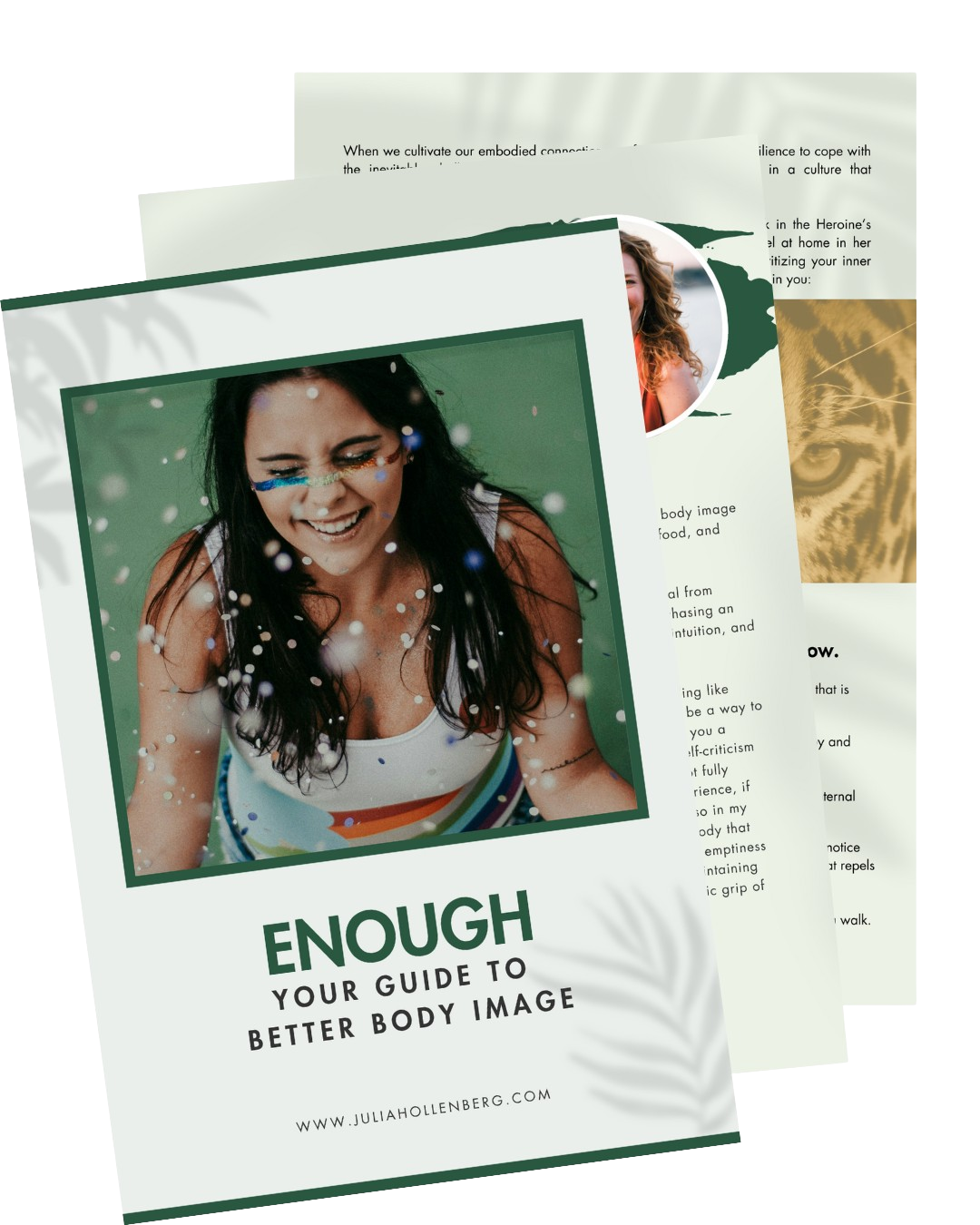Today we are talking about how diet culture shapes our body image. This is a hugely influential force that can really define and run our narrative of our bodies, our narrative of ourselves from our unconscious, if we are not yet calm, conscious of diet culture and its impact. So when I say diet culture, what I mean is this invention, the invention of our culture that places smaller bodies as more worthy or better than larger bodies.
So we have this effect of thin privilege and weight stigma. And it’s very painful if you find yourself at a place where, like, less than the quote standard, if you find yourself in a less privileged body. It’s very painful to feel that sense of unworthiness or sense of not good enoughness, that sense of lack. And our capitalistic economy, the diet industrial complex, benefits hugely when we have so many people who are believing the story of not enoughness based on body size and shape.
What’s important to realize is just how powerful images are in shaping our brain’s perception of what is normal. And images are far more powerful than words are. So because diet culture is the dominant culture, what we are going to see in mainstream media is mostly people who are representing the thin ideal, the privileged class of bodies. And what that does is makes us believe that these smaller bodies that are conforming, or mostly conforming to the thin ideal is what most people have.
But that is far from the truth. So I’m going to use some BMI numbers here just as a way of describing and categorizing. This has nothing to do with health measures. It has nothing to do with worthiness. So if we look at a bell curve, which is basically a distribution of body sizes the most, right? So the average woman’s body in America falls at about BMI 27-28.
So the largest percentage of people lies at around BMI 27-28. And then the tails of the bell curve move out from there. And so when we’re looking at the small end of this distribution of body sizes, the smallest body sizes, we might have, let’s just say 5% there. That’s the 5% that we are seeing in the media, in advertisements, right? On social media, on. Well, it depends. It depends a lot on social media.
But in the mainstream media, we’re seeing these 5% of smallest bodies, and we are upholding that as the norm when that just does not hold true. When we look at the whole distribution of diversity of body sizes, a powerful thing that we can do to start to recalibrate our mind’s perception of what is normal in terms of our bodies is to seek out images and videos and role models of women along the size diversity spectrum, and especially in larger bodies who are living in a way that is full, right?
Fullness of being. And so when we see women in larger bodies who are stepping into their lives and exuding confidence and intelligence and creativity and compassion and sexiness, it starts to open up some previously closed places in our minds. It says, oh, maybe me too, right? Maybe I could step into my fullness of being in my own way. And that’s when the magic starts to happen. And social media can be a stepping stone, right, of finding these kinds of role models online, so that then we can start to leave the world of social media or take a break from it and step out into the real world to join groups, to join activities where there are women in all different kinds of bodies.
So we can really start to feel the diversity, the diversity of human bodies, and that it’s possible to step into our own version of fullness, of being in whatever body it is that you have. And when we have this impulse of, oh, maybe me too, then it starts to open us into an experience of connection, of belonging or the possibility of belonging. And when we belong, a true sense of belonging means that we can be there exactly as we are, right?
We can find connection, we can rest there without any conditions, without any changes. And that is a healing force.

